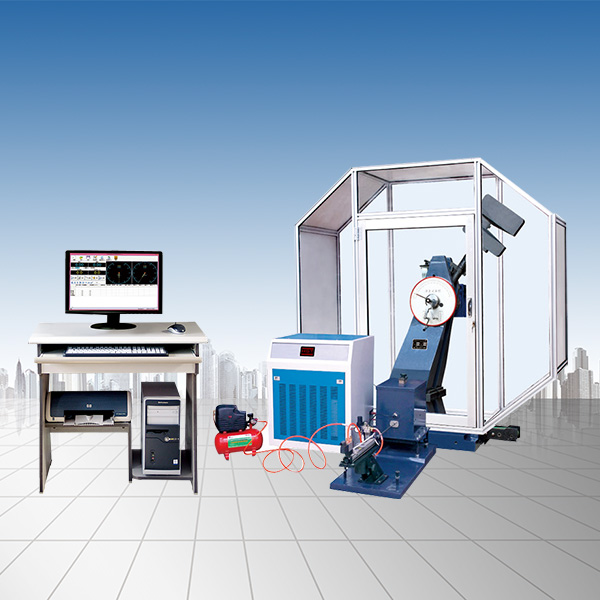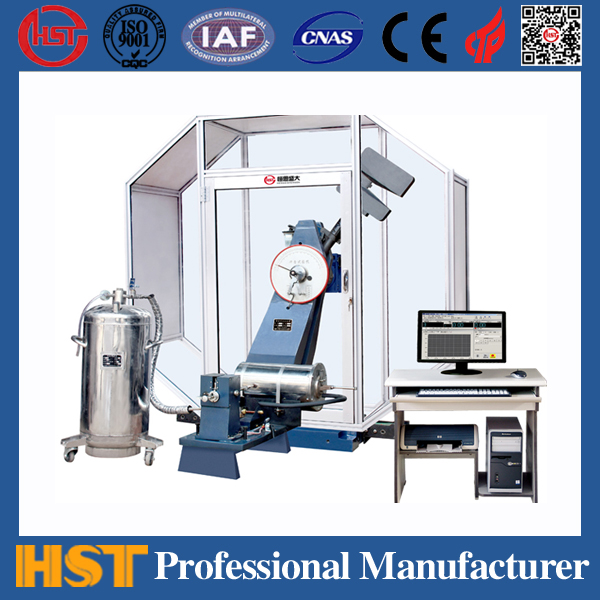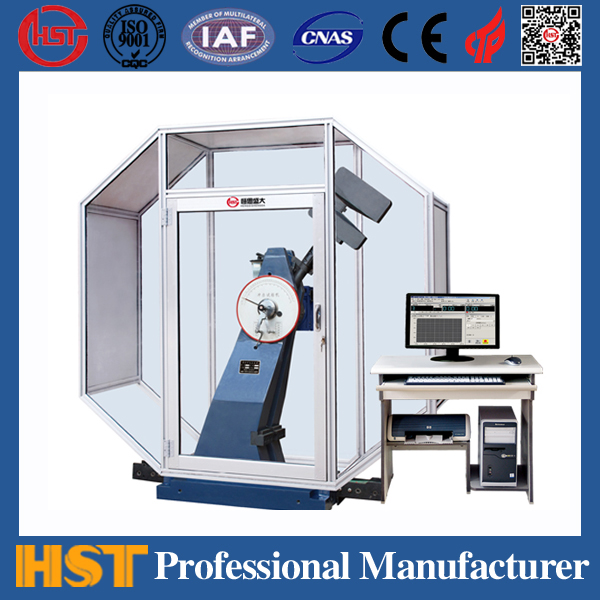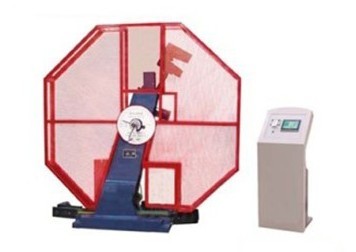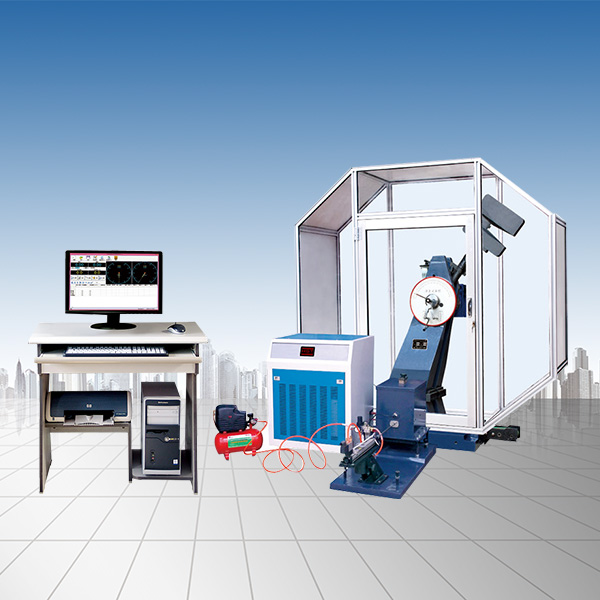Industry Information
Analysis of the properties of the base paper
Release time:2018-11-23 source:Jinan Hengsi Shanda Instrument Co., Ltd. Browse:
The weight per unit area of paper is called quantification. The allowable difference in quantity between face paper and corrugated core paper is 5%. The various properties of the base paper are closely related to the basis weight, and exceeding this standard is enough to affect the quality of the product.
Quantitative inspection is based on the national standard GB451.2 paper and the quantitative measurement method on duty. The sample should be suspended in air with a specified temperature (20±20℃) and relative humidity (65±2%), so that its surface can be fully contacted with the modulated air. The modulation time is 24 hours, and the balance with a sensitivity of 0.25% is weighed. The basis weight of the paper is calculated according to the following formula, and expressed in three digits.
If the measurement cannot be performed under the specified temperature and relative humidity, the calculation can be calculated according to the following steps:
Step: Weigh the weight of the sample using a standard balance
Step 2: Determine the moisture content of paper samples according to GB462 paper and cardboard moisture determination method
Step 3: Calculate the weight at the moisture content of 9% according to the following formula, which is the quantification of the sample.
Quantification of the sample (g/m2) = moisture content 0.09 thickness (THICKNESS or CALlPER)
The thickness representation of paper is expressed in mm (mm), and the English is expressed in inch. The British and American corrugated core paper is usually expressed in "rail", and each point is equal to 0.001 inches. For example, the commonly used corrugated core paper of 26b/MSF2 is 0009 inches, commonly known as "9-point" paper.
The thickness of the corrugated cardboard can be obtained by the thickness of the base paper and the thickness of the corrugated cardboard can be understood by explaining the wear degree of the corrugated roller (CORRUGATINGROLL) and the degree of deterioration of the strength of the carton during processing.
BURSTlNGSTRENGTH
The cracking strength is a very important project in the manufacturing of corrugated cartons, and the sample is in diameter 1. The area of a 2-inch circle is pressed at a certain pressurization speed to break. The pressure applied to the paper during rupture is called the resistance to breakage, and it is determined according to the national standard; the method of GBl539 cardboard resistance determination is measured, and its unit expression method is expressed in metric orders of several kilograms per square centimeter (k9/cm2), and the system is several pounds per square inch (Eb/in2).
In addition to the basis weights such as 2009/m2, 2309/m2, 2509/m2..., the standard for the difference is based on the breakage index. For example, the national standard GB13024-91 box paper is divided into five levels as follows:
The break-resistant index is only another way to express the break-resistantness, which is easy for the operator to remember. It cannot be included in the raw paper acceptance items, nor can it be ranked along with the break-resistantness item, that is, the break-resistantness and break-resistantness index should not be listed in the acceptance standards. The relationship between the breaking resistance and the breaking resistance index is as follows:
In the early days, the specifications of raw paper and corrugated cartons were mainly broken resistance. In advanced countries in corrugated carton industry, such as the United States and Japan, the importance of break resistance was gradually replaced by ring pressure strength, box pressure strength and sprint strength (PUNCTURESTRENGTH).
Ring compressive strength (RINGCRUSH)
Cut the base paper into a "6X1/2" sample, roll it toward the cylindrical shape in the long direction, so that the two ends of the sample are connected to test the pressure it can withstand. This strength is called the ring pressure strength. This strength is a unique test for the manufacture of corrugated cartons, and the experimental method is performed according to the GB2679.8 cardboard ring compressive strength determination method. Because the compressed direction of the corrugated paper surface is the vertical direction of corrugated paper, it is horizontal for the base paper, and the pressure resistance of the corrugated paper can be calculated by the horizontal ring pressure strength of its combined base paper (including box board paper and corrugated core paper). Therefore, only the horizontal ring pressure strength of the base paper is tested.
Tensile strength (TENSILESTRENGTH)
For paper samples with a width of 1.5 cm and length of 18 cm, the paper samples are subjected to a certain limit of tension, and the paper samples are therefore broken. The tension that the paper samples can withstand is called tensile strength commonly known as tension.
In order to obtain flat corrugated cardboard in the manufacture of corrugated cardboard, both kraft cardboard or corrugated core paper are used to brake and apply a large tension on the base paper to allow the base paper to enter the corrugated cardboard machine smoothly. Otherwise, poor bonding, high and low corrugated, and poor operation will affect the mechanical efficiency. Especially corrugated core paper is important. The linear speed of corrugated core paper on the corrugated paper machine is 1.3 to 1.6 times faster than that of box board paper. At the same time, it must be molded into a corrugated shape between corrugated rollers (CORRUGATINGROLL) under high temperature and high pressure. If the tension of corrugated core paper is insufficient, the tension strength of the box board paper will occur at the crimping position during the carton production process, and the fracture will occur on the outside of the four corners of the carton box during folding operation. In order to improve the quality of corrugated cardboard box, the importance of the tensile strength of the base paper is no less than the resistance to breakage. Generally, only the longitudinal tensile strength of the base paper is tested.
Another representation of tensile strength, breaking length BREAK-INGLENGTH), whose conversion formula is as follows:
Break length (km) = tensile strength {;’£1}×1000 sample basis weight (g/m2)×mode width (mm)
Tear Strength (TEARINGSTRENGTH) commonly known as tearing force
The base paper must be torn with a certain amount of energy before it can be torn. The instrument that determines this energy is a tear strength tester, and the measured results are expressed in grams (g). When the carton handler inserts his hand into the carton's hand holder, if the tearing force of the base paper is insufficient, tearing will occur from the upper sides of both ends of the hand-held hole, destroying the integrity of the carton. Furthermore, when using base paper to make corrugated cardboard, the forces on both sides of the base paper are equal, and one side is relaxed and the other side is tighter. The loose side will jump. If the tear force is insufficient, the base paper will break from the loose side.
Waterproof performance
The waterproof properties of box board paper and corrugated core paper are indispensable properties of corrugated cartons. The waterproof performance of box board paper is called water absorption based on the weight of moisture absorbed per unit area in unit time. It is generally expressed in g/m2/2mins. The test method is called COBBSIZ-INGTEST. The water absorption on both sides of box board paper is equally important. The waterproof performance of corrugated core paper is called glue or water resistance. The test method is to place the corrugated core paper sample into a glass dish containing amine thiocyanide solution, and drop several drops of ferric chloride solution on the surface of the sample. When the two solutions come into contact, it will turn red. The glue precipitation is expressed in the penetration time (seconds, SEC) of the two solutions.
Wet strength (WETSTRENGTH) refers to the strength retained by the base paper after being immersed in water for 24 hours or placed in high temperature (400C or above) and high humidity (95% R.H.) air for a considerable period of time. Generally, wet breakage resistance, wet tensile strength, wet ring pressure strength, etc. of the base paper are tested. This property is caused by the paper mill to increase the wet strength agent in the paste during paper making operations, and after heat treatment, a waterproof layer is generated between the fibers to prevent moisture from penetration, that is, a wet strength effect is produced. If corrugated cartons need to be piled in high humidity environments for a long time or refrigerated, they must use wet-strengthened base paper to be competent.
Conditions and requirements for the production of corrugated cardboard for the base paper
Corrugated core paper is pressed into a corrugated shape on a corrugated paper machine (CORRU-GATOR), and then applied to corrugated crests and kraft cardboard to form corrugated cardboard. The appearance and strength of the paper are closely related to the base paper. The requirements for the base paper are as follows:
Operating suitability of base paper (RUNINGABILITY)
When corrugated core paper presses corrugated hundreds of corrugated one minute, it is subject to a great tension, so the plasticity of corrugated core paper is very important. Only when it reaches a certain standard can it be made into a straight and firm corrugated corrugated. Recently, high-speed corrugated paper machines have been increasing and their speed has been increasing. For example, poor quality of base paper is enough to affect the operation of the machinery and lead to a decrease in production efficiency.
The uniformity of the base paper
Whether vertical or horizontal, if the moisture varies greatly, it will cause serious poor fitting, crooked cardboard, and inverted cardboard. Uneven thickness leads to poor operating suitability, and the physical strength of the finished product is greatly affected. Therefore, the uniformity of moisture and thickness of the base paper during acceptance and use is regarded as one of the important items. The appearance of the base paper The appearance of the base paper should be flat on the outside, without holes, cracks, filth and other obvious shortcomings. In addition, the color of the surface of the box board paper is also a worthy of attention. It turned out that during the use of corrugated cartons, it was its main function to protect the completeness of the contents. Now it has evolved into not only protecting the contents, but also taking on the responsibility of promoting sales and stimulating consumers' desire to buy. Therefore, exquisite printing is needed on the surface of corrugated cartons. The color tone of the surface of the box board paper is sufficient to affect the printing effect. However, in the papermaking process, due to different slurries, such as excessive requirements for the surface tone, there are real difficulties. In the acceptance of the color of the box board paper surface, the upper limit of control and the lower limit of control are formulated, and the design of printing patterns can be improved by choosing ink.
Effect of relative humidity on physical strength of base paper
The physical strength test of the base paper is in accordance with the national standards; the regulations on the treatment of pulp, paper and cardboard samples. ① Before the sample is prepared, the moisture content should be dried to about half of the water content in the standard condition (drying temperature shall not exceed 600C). ② The sample was suspended in air of 20±20C and 65±2%RH, so that its surface was fully in contact with the modulated air. ③ Cardboard or paper with good waterproofing performance must be prepared for 24 hours or more than 48 hours until there is no significant change in the total weight. All physical tests should also be held at the same temperature and humidity. The United States has a continental climate, so various tests are conducted under the standard state of 23±2℃ and 50±2% RH. Therefore, the test conditions are different, so the obtained test values cannot be compared.
The base paper used in corrugated cartons is composed of plant fibers. The moisture content of plant fibers changes with the changes in the surrounding air conditions. When the surrounding air humidity is high, the base paper will become wet, and when the humidity is low, the moisture of the base paper will reach an equilibrium state. When two sheets of paper with very different moisture content under the same temperature and humidity state, the moisture content of the lower moisture absorbs water; if the moisture content is higher, the moisture content can be released, and both can reach an equilibrium state, but the moisture content of the two is still slightly different. Therefore, before the sample is prepared, the water of the base paper sample should be dried to about half of the water content when it is about the standard state, and then the moisture content can be absorbed by reabsorbing the water content, and the changes in the moisture absorption and release of the base paper.
The balance point of moisture in various papers varies depending on the type of pulp, with a humidity of 60% R. H. Under the condition, when the moisture reaches the equilibrium point, the coated paper is about 6%, the newsprint is about 10%, and the base paper for corrugated cartons is about 9.5%.
The physical strength of the base paper is greatly affected by the moisture content, and its changes are shown in Figure 2. With humidity 65% R. H. The intensity is 100.
Tensile strength is 30-40%R. Between H, it increases with the increase of humidity, the humidity continues to increase, and the tensile strength drops sharply.
The elongation increases with the increase of humidity, and the longitudinal change of the base paper is large in the horizontal direction.
The fracture strength is the same as the tensile strength, and the humidity increases, and the fracture strength decreases accordingly, and the reduction ratio is smaller than the tensile strength.
The tear strength increases with the increase of humidity, regardless of longitudinal or transverse direction, but decreases again to the extreme high humidity range.
- Previous article:Several common test machines
- Next article:Test method for polymer cement waterproof coating
Recommended productsPRODUCTS



















